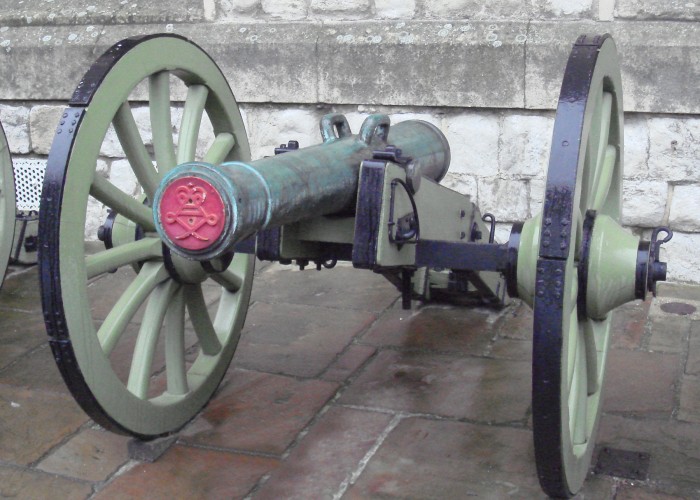French Cannon Captured at Waterloo
This is a French cannon, captured by the Allied army after the Battle of Waterloo. The artillery were a vital part of the French army, and their superb standard of gunnery and innovative tactics were crucial to Napoleon’s success in the years before Waterloo.
At the time of the Battle of Waterloo, the French artillery corps was one of the finest in the world. It had been built over decades with investment from the pre-Revolutionary royal government, and had a finely-trained officer corps who were experts in the mathematics needed to accurately aim cannonballs.
Emperor Napoleon himself had begun his military career in the French Army’s school of artillery, becoming a Lieutenant in the II/4th Regiment of Foot Artillery in 1791. The French Army was one of the first in the world to deploy its cannons massed together in a “Grand Battery”, designed to pound the enemy and smash a hole in their lines, which infantry and cavalry could then easily attack. The French also made more cannons than most other European armies, and made good use of guns captured from other armies. At the Battle of Waterloo, the French deployed 252 large guns, as opposed to the Allies’ 156.
80 of the French cannons were assembled into a Grand Battery at the centre of their line, while others were deployed to bombard the Allied strongpoints of Hougoumont and La Haye Sainte. These caused terrible damage wherever they were able to fire. A British cavalry officer, Major Macready of the 30th, described charging against the French gun emplacements:
“400 cannon were belching forth fire and death on every side; the roaring and shouting were indistinguishably commixed—together they gave me an idea of a labouring volcano.”
However, most of the Allied army was protected from the full effect of the French bombardment. The Duke of Wellington had positioned most of his troops slightly behind the ridge of Mont St. Jean, and had commanded the cavalry to dismount and some of the front infantry regiments to actually lie down on the ground. This “reverse slope” hid the Allied troops from the French guns, who were on a much smaller ridge on the other side of the valley of Waterloo. Only when the Allied troops had to move forward to defend against French advances, or during the final general Allied attack, did they suffer the full effect of the French cannons.
This is a relatively light 6-pound cannon (so called because it fired a solid iron ball that weighed 6 pounds, or about 2.7 kilos). It was abandoned in the French retreat at the end of Waterloo, and brought back to London as a trophy of victory.
-
Curatorial info
- Originating Museum: Royal Armouries at the Tower of London
-
Use this image
You can download and use the high resolution image for use in a non-profit environment such as a school or college, but please take note of the license type and rights holder information below
- Rights Holder: Created by Uploadalt, Wikimedia Commons
- License Type: Creative Commons
Find it here
This object is in the collection of Royal Armouries at HM Tower of London







